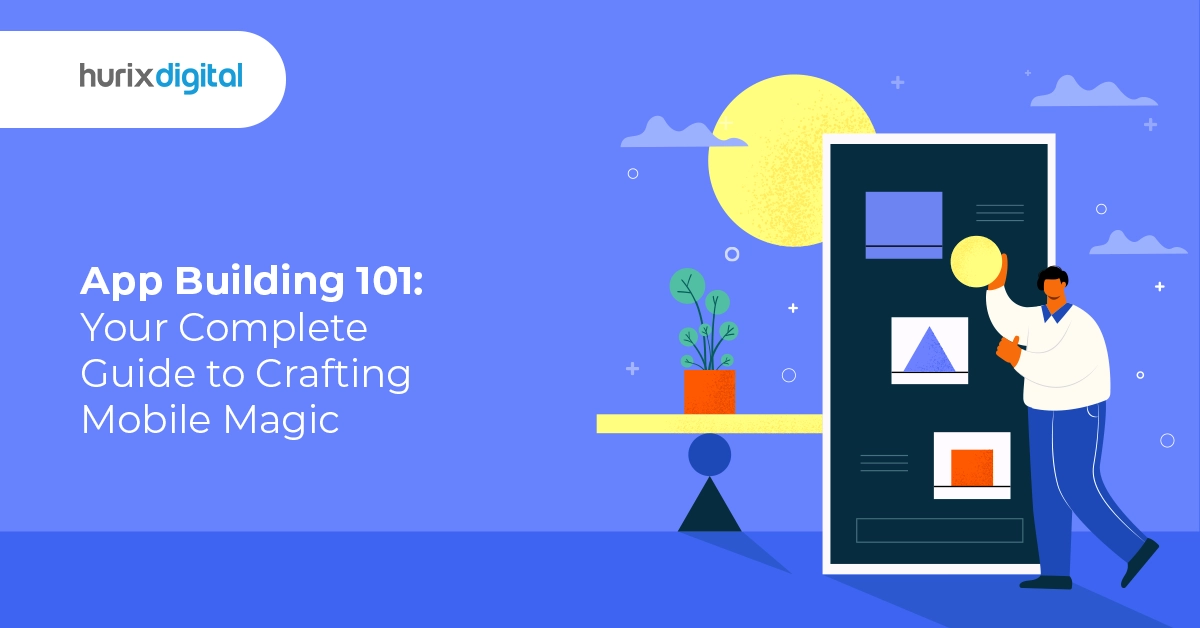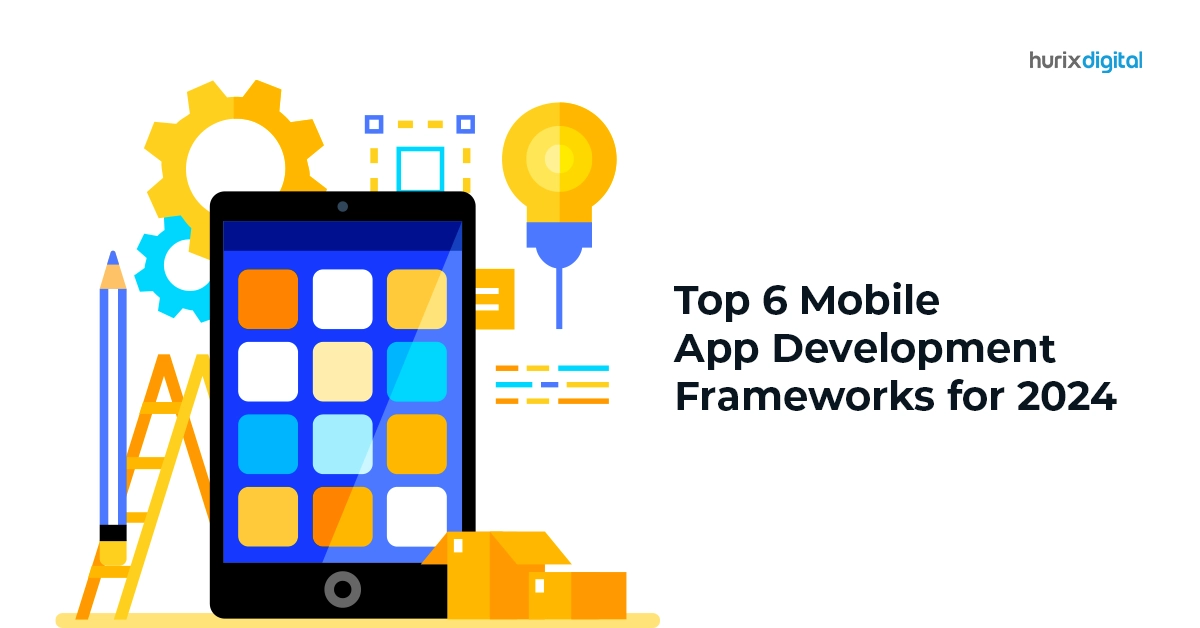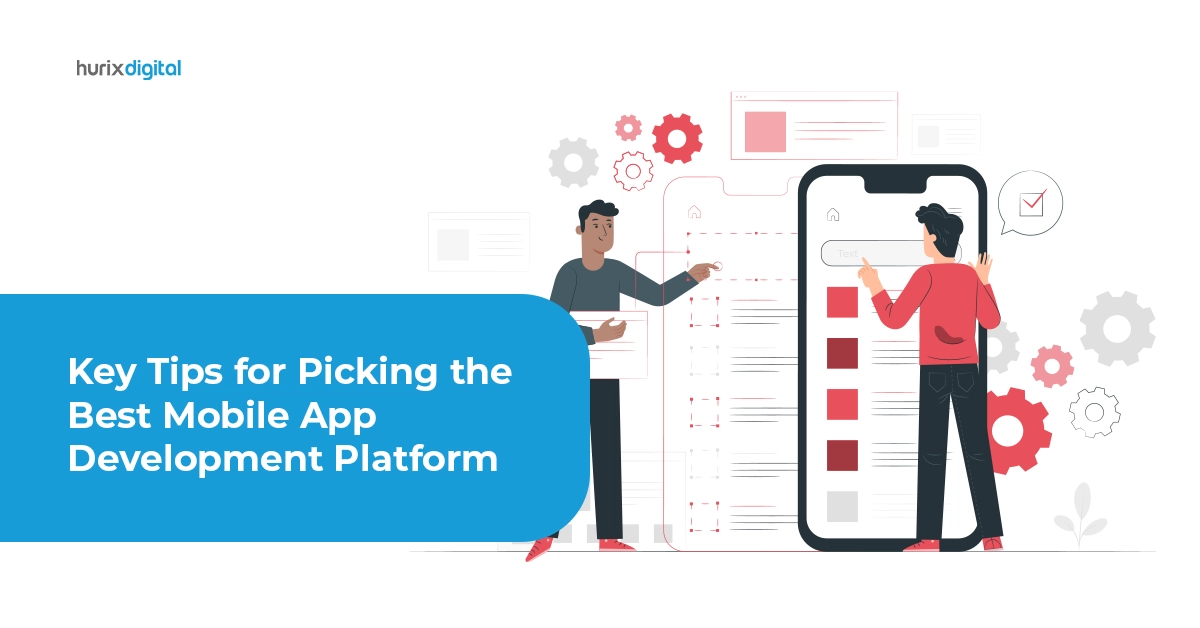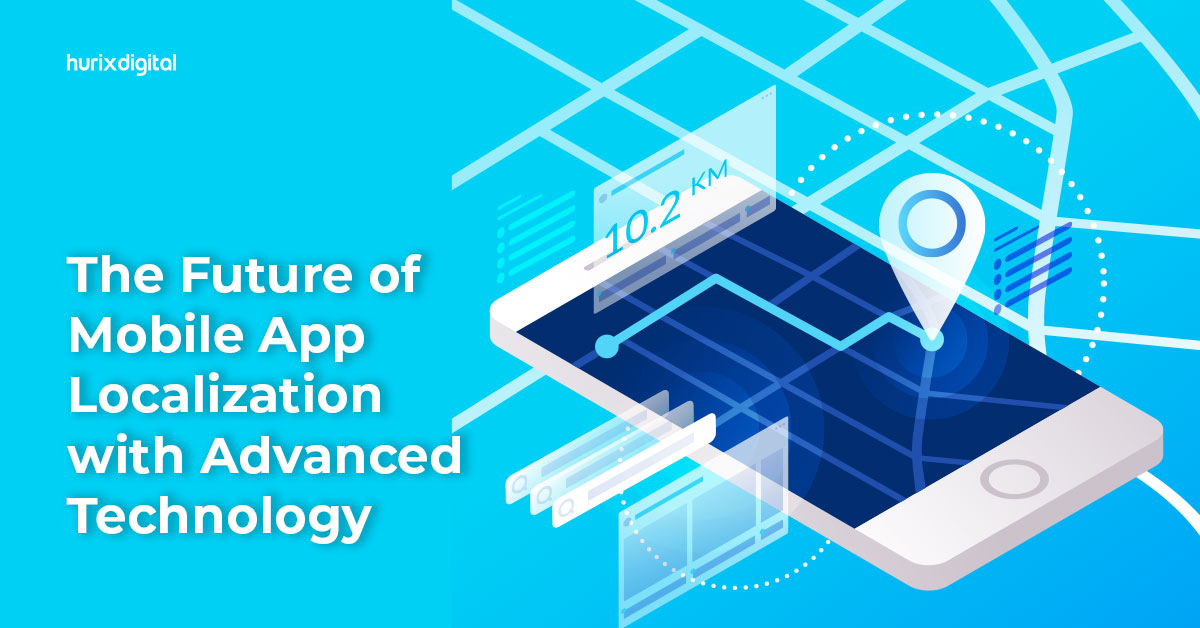
App Building 101: Your Complete Guide to Crafting Mobile Magic
App development is an exciting career choice for anybody looking to get into the field. Nonetheless, creating apps when you don’t have any previous experience can be quite tough; therefore, you must familiarize yourself with the right approach beforehand. Learning how to develop a mobile app can significantly streamline your journey.
There is no doubt that mobile applications have overwhelmed the market, with over 2.43 million apps on the Google Play Store and 1.81 million apps available for download on the Apple App Store.
This detailed mobile app guide will walk you through each step to becoming a mobile app developer, from working on a concept to launching it. Keep reading to join the exciting domain of mobile application development and learn how to design mobile apps.
Table of Contents:
Different Types of Mobile Apps
In the past, when it came to native app development, low-level coding used to be your only option. For instance, suppose you wanted to launch an app on both iOS and Android platforms, you were required to fresh code for both applications separately.
Today, however, the entry barrier for developing native mobile apps has been brought down considerably. Development tools, programming languages, and online software tools have become more efficient, with Javascript being used to create code that works across multiple platforms.
This technological advancement has simplified the development of native apps for almost all industries, including eCommerce, retail, healthcare, and more. Thus, understanding how to develop a mobile application for each type can help you decide the best approach for your project.
The following is a brief overview of the different app types and their unique development attributes.
1. Native Mobile Applications
Mobile devices have native apps that are installed directly and usually through either the Apple App Store or Google Play Store. They typically work without requiring internet and use supported in-built features on the installed device.
Making a native application involves writing code that is specific to the device’s operating system, whether iOS, Android, or any other.
2. Cross-Platform Native Mobile Applications
By using a cross-platform app, you can use a single codebase that works on different platforms. This saves time and effort by avoiding duplicate coding. Additionally, the app can be easily installed on iOS and Android devices while maintaining their native formats.
Opting for cross-platform native apps can save costs and speed up development, allowing businesses to reach a larger audience without sacrificing user experience.
3. Hybrid Mobile Applications
Hybrid and cross-platform are terms that are frequently confused in conversations about mobile applications despite having different meanings. Hybrid apps, like cross-platform apps, are created once and can operate on multiple platforms.
For beginners, hybrid development is considered the best choice because there are no complex technicalities involved. It can be implemented with basic skills in web development or using no-code app builders. In 2022, approximately 74% of mobile app developers were using hybrid or cross-platform development tools.
4. Progressive Web Applications (PWA)
Progressive Web Apps are applications distributed via the Internet rather than being installed directly on your handheld device. According to a Google report, PWAs can increase engagement by up to 50% and improve load times considerably.
Modern technology enables PWAs to feel nearly identical to a typical native app experience. They also enable you to send notifications to your users through their installed web browser. However, PWAs come with certain restrictions when compared in terms of native features offered by an installed app on the device.
Also Read: Top 6 Mobile App Development Frameworks for 2024!
Bring Your Vision to Life: The App Development Process
Creating applications becomes easier when you break down the process into different stages. Follow this mobile app guide carefully:
1. Refine Your App Idea
First, we need to brainstorm ideas before we commence our software development. While some may already have a basic concept in mind, others might have to start from scratch.
Below are some insightful questions that will help you get your mind thinking about the relevant issues:
- What are the goals you have for your mobile application?
- Which customer pain points will your application resolve?
- What kind of features will you provide in the app?
- What is the budget you are willing to set aside for the development?
- How do you intend to undertake the app development job? (app builder, agency, In-house team, etc.)
The brainstorming process can cause you to overlook certain critical app features. Minimize unnecessary add-ons or duplicate components that may not necessarily relate to the main functionalities of the application.
2. Conduct Essential Market Research
It’s rare to create something entirely original. Once you are done with your brainstorming process, check out some existing apps that resemble your idea. Ask yourself important questions like:
- Who do you consider your main competitors in the industry?
- Which specific demographic are you trying to reach?
- What unique approach are you taking to distinguish yourself from competitors?
- Which platform do you believe is most suitable for the app’s launch?
- What strategies will you implement to advertise your app effectively?
The task of conducting thorough market research must not be ignored or rushed because it will tell you if there truly is a market for your brainstormed idea. Poor market research will lead you to invest time and resources into something that no one really needs.
3. Develop an Exceptional User Experience (UX) Design
Another vital part of the process is designing the UX of the mobile app. Picture in mind how you want your app to appear visually. Make some doodles and wireframes so you can see how this application will function. Using an Android app development guide can help you tailor your design specifically for Android devices.
Here are some key points to focus on:
- Construct a roadmap to illustrate the interlinks across each app screen.
- Consider how users will use your application differently from a mobile-based site by people (developing apps is different from building websites).
- Prioritize user experience above all.
Before you start building a fully operational application, it is advisable to create a few prototypes using your wireframes. These will enable you to produce a minimum viable product (MVP): a basic yet high-quality app that accomplishes its main goal without other additional features.
4. The App Development Process
Finally, the time has come to create the actual application. This crucial step includes all technologies at the server’s backend, APIs, and building interfaces on the front end. In brief, keep these steps in mind:
- Select your approach to development.
- Gather your team of developers.
- Designate a leader for the project.
- Set up a schedule with key checkpoints and objectives.
- Remain flexible and ready to adapt to modifications throughout the process.
Depending on the method you use in your development process, you might have to create two distinct editions: one compatible only with Apple devices while another with Android-powered smartphones or tablets. However, you could also use cross-platform app creation software and develop only one version to launch on multiple operating systems.
The resources it would take to build the app depend on the nature of the application as well as its features. For instance, it requires less time and investment to develop a primitive app with core functionality. However, if you are looking to implement user authentication servers, GPS, real-time user communication, etc., be prepared to pool in time and resources.
5. Rigorous Testing and Analysis
Ensure that your app has full functionality before it goes public. Finding any issues such as bugs, glitches, or unexpected crashes is what is referred to as app testing. Here are some tips to keep in mind:
- It is recommended to involve Quality Assurance testers in the app testing process during development.
- Ensure that the app is tested on both iOS and Android platforms.
- Conduct testing on various devices such as smartphones, tablets, and others.
- Engage real users in testing to receive feedback and enhance the app.
Once your app goes public, you can release updates and subsequent newer versions. However, trying to perfect it at the testing stage may significantly delay the launch. Therefore, it’s important not to be too tough on yourself but rather just release a functional mobile application.
Also Read: Benefits of a Mobile-First LMS Platform in Employee Training
Final Words
Given the proper assistance, you can breathe life into your mobile app project and make the process exciting. The roadmap to making an app competitive includes understanding different app categories, brainstorming and refining the concept, market research, developing user-friendly layouts before coding, and finally testing the final product.
If you are prepared to convert your concepts into groundbreaking digital solutions, Hurix Digital is here to assist you. We take pride in our proficient team that utilizes cutting-edge technology to deliver customized mobile application development services that cater to your unique needs. Contact us today, and let’s create a mobile app that’s not just powerful but downright irresistible.

Currently serving as the Vice President of Technology Delivery Operations at HurixDigital, a prominent global provider of digital content and technology solutions for publishers, corporations, and educational institutions. With over 16 years of experience spanning EdTech and various domains, I hold certification as a SCRUM Product Owner (CSPO). My expertise includes operations, finance, and adept people management skills.








